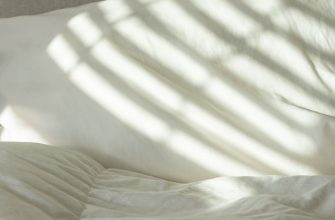- The Role of Light and Space in Enhancing Concentration
- Minimizing Distractions: Creating a Productive Workspace
- The Psychological Effects of Clutter on Attention Span
- Nature and Focus: How Green Spaces Influence Mental Clarity
- Soundscapes: The Impact of Noise Levels on Your Ability to Concentrate
- Personalizing Your Environment for Optimal Focus and Productivity
The Role of Light and Space in Enhancing Concentration
Light and space play a crucial role in enhancing concentration and improving focus. The way these elements interact within a work environment can significantly influence attention levels, productivity, and overall mental clarity. Proper lighting can make a substantial difference in how well an individual can concentrate on tasks. Natural light, in particular, is known to boost mood and energy, which directly correlates with enhanced focus. In contrast, poor lighting can lead to eye strain and fatigue, detracting from the ability to concentrate.
Additionally, the spatial arrangement of a workspace contributes to the effectiveness of concentration. Open spaces can foster creativity and collaboration, while more confined areas may help minimize distractions, allowing for deeper focus on individual tasks. The balance between openness and privacy is essential in creating an environment conducive to sustained attention.
- Natural Light: Utilizes sunlight to improve mood and energy levels, enhancing focus.
- Task Lighting: Provides targeted illumination for specific activities, reducing eye strain and promoting better concentration.
- Color Temperature: Warmer tones can create a calming atmosphere, while cooler tones may stimulate alertness, both impacting focus.
- Spatial Design: The arrangement of furniture and equipment can minimize distractions and facilitate better attention management.
- Noise Levels: A quieter environment supports concentration, while excessive noise can disrupt focus.
In summary, both light and space are integral to creating an environment that promotes enhanced concentration. By optimizing these factors, individuals can significantly improve their ability to focus, leading to increased productivity and better results in their endeavors. Understanding the interplay between light, space, and attention can pave the way for a more effective work environment.
Minimizing Distractions: Creating a Productive Workspace
Creating a productive workspace is essential for minimizing distractions and enhancing focus. A well-organized environment significantly impacts attention and efficiency. To cultivate a space that promotes concentration, various strategies can be implemented.
- Declutter the Workspace: A tidy area reduces visual distractions, allowing for clearer thinking and improved productivity.
- Optimize Lighting: Utilize natural light when possible, as adequate illumination can enhance mood and focus. Consider adjustable lamps to maintain the right ambiance.
- Control Noise Levels: Noise can severely disrupt concentration. Soundproofing techniques or noise-canceling headphones can create an ideal sound environment.
- Choose Comfortable Furniture: Ergonomic chairs and desks can prevent discomfort and enable longer periods of focused work.
- Personalize the Space: Adding personal touches, such as plants or art, can create a welcoming atmosphere without causing distraction.
Incorporating these elements into a workspace can effectively minimize distractions and foster a more productive environment. By focusing on the arrangement and features of the workspace, individuals can create a setting that significantly enhances their ability to concentrate and perform tasks efficiently.
The Psychological Effects of Clutter on Attention Span
Clutter can have significant psychological effects on attention span and overall productivity. An environment filled with disorganized items can lead to increased stress levels and distraction, making it challenging to concentrate. When a workspace is cluttered, the mind tends to wander, reducing the ability to focus on tasks effectively.
Research indicates that a chaotic environment can impair cognitive function. Individuals may find it difficult to prioritize tasks or remember important information when surrounded by clutter. This disarray creates a constant visual distraction, which can further diminish attention span and hinder the flow of work.
- Increased Stress: Clutter is often linked to higher stress levels, which can negatively impact mental clarity and focus.
- Distraction: A cluttered space can draw attention away from tasks at hand, leading to a fragmented thought process.
- Difficulty Prioritizing: An overwhelming amount of items can make it hard to determine which tasks are most critical.
- Cognitive Overload: The brain works harder to process excessive stimuli, which can exhaust mental resources and diminish focus.
To improve focus, it is essential to create a clean and organized environment. Implementing strategies such as decluttering regularly can help maintain a workspace that fosters concentration. By minimizing distractions and creating a serene atmosphere, attention span can be enhanced, leading to increased productivity and better overall performance.
In summary, the psychological effects of clutter on attention span are profound. A clear, organized space not only reduces stress but also allows for improved focus and efficiency. By recognizing the impact of environment on mental clarity, individuals can take proactive steps to create a workspace that promotes sustained attention and productivity.
Nature and Focus: How Green Spaces Influence Mental Clarity
Green spaces have a profound impact on mental clarity and overall focus. Numerous studies indicate that exposure to nature can significantly enhance cognitive function, reduce stress, and improve attention span. The calming effect of greenery allows individuals to recharge and regain concentration, making it easier to tackle complex tasks.
Engaging with natural environments promotes relaxation and reduces mental fatigue, which are critical for maintaining focus. The presence of plants, trees, and open areas has been shown to lower cortisol levels, a hormone associated with stress. This reduction in stress fosters a more conducive atmosphere for improved attention and productivity.
- Enhanced Creativity: Immersion in nature can stimulate creative thinking, allowing the mind to wander freely and generate new ideas.
- Improved Mood: Natural surroundings uplift spirits, creating a positive mindset that is essential for sustained focus.
- Increased Energy Levels: Time spent in green spaces can rejuvenate energy levels, making it easier to maintain concentration over extended periods.
Creating environments that integrate nature can be beneficial for workplaces and study areas. Incorporating plants, natural light, and outdoor views can transform a space into a focus-enhancing sanctuary. Even small green elements can make a difference, providing a respite from the usual distractions of daily life.
In summary, the relationship between green spaces and mental clarity is significant. By fostering environments that promote interaction with nature, individuals can enhance their focus and productivity. Investing in green spaces can lead to better cognitive performance and overall well-being, reinforcing the idea that nature is a powerful ally in the quest for improved attention.
Soundscapes: The Impact of Noise Levels on Your Ability to Concentrate
Soundscapes play a crucial role in shaping an individual’s ability to concentrate. The environment’s noise levels can significantly influence focus and productivity. Understanding the types of sounds that enhance or hinder concentration is essential for creating a conducive workspace.
- White Noise: This type of sound is often used to mask other disruptive noises. It can create a consistent auditory backdrop that helps individuals maintain focus.
- Natural Sounds: Sounds from nature, such as flowing water or gentle wind, have been shown to enhance concentration. These soothing sounds can lower stress levels and promote a calm mental state.
- Music: Certain genres of music, like classical or ambient, can improve focus. However, lyrical music may be distracting, especially when performing tasks that require deep thought.
- Silent Environments: Complete silence can also be beneficial for concentration, but it may not be suitable for everyone. Some individuals may find it uncomfortable or too isolating.
- Background Conversations: While some may find low levels of chatter to be distracting, others may thrive in such environments. Finding the right balance is key to enhancing focus.
To optimize concentration, it is important to identify personal preferences regarding soundscapes. Experimenting with different noise levels can lead to a tailored environment that maximizes focus and overall productivity. By understanding the impact of sound on attention, individuals can create a workspace that fosters better concentration and effective task completion.
Personalizing Your Environment for Optimal Focus and Productivity
Creating a personalized environment is crucial for enhancing focus and productivity. An optimized workspace minimizes distractions and fosters an atmosphere conducive to concentration. Various elements play a role in shaping this environment, including lighting, color schemes, and organization.
- Lighting: Natural light is proven to boost mood and attention. When possible, position the workspace near windows to harness sunlight. For artificial lighting, opt for warm, adjustable lights that reduce eye strain.
- Color Schemes: Colors can significantly affect cognitive function. Cool colors like blue and green are known to enhance focus, while warmer shades can stimulate creativity. Choose a palette that aligns with personal preferences and work requirements.
- Organization: A clutter-free desk promotes clarity and reduces stress. Implement organizational tools such as trays, folders, and digital apps to maintain an orderly space. Regular decluttering can also refresh the environment, keeping the mind sharp.
- Sound Environment: Ambient noise can either enhance or hinder concentration. Find a balance with soft instrumental music or soundscapes that promote focus. Alternatively, using noise-canceling headphones can help eliminate distractions in a noisy setting.
- Personal Touches: Incorporating personal items like photographs, plants, or artwork can create a sense of comfort and belonging. However, ensure these items do not overwhelm the workspace, maintaining a balance between personalization and minimalism.
Ultimately, a tailored environment can significantly enhance focus and productivity. Evaluating and adjusting elements within the workspace can lead to substantial improvements in attention and work quality. By understanding the impact of environmental factors, individuals can create a space that supports their unique working style and enhances overall performance.








